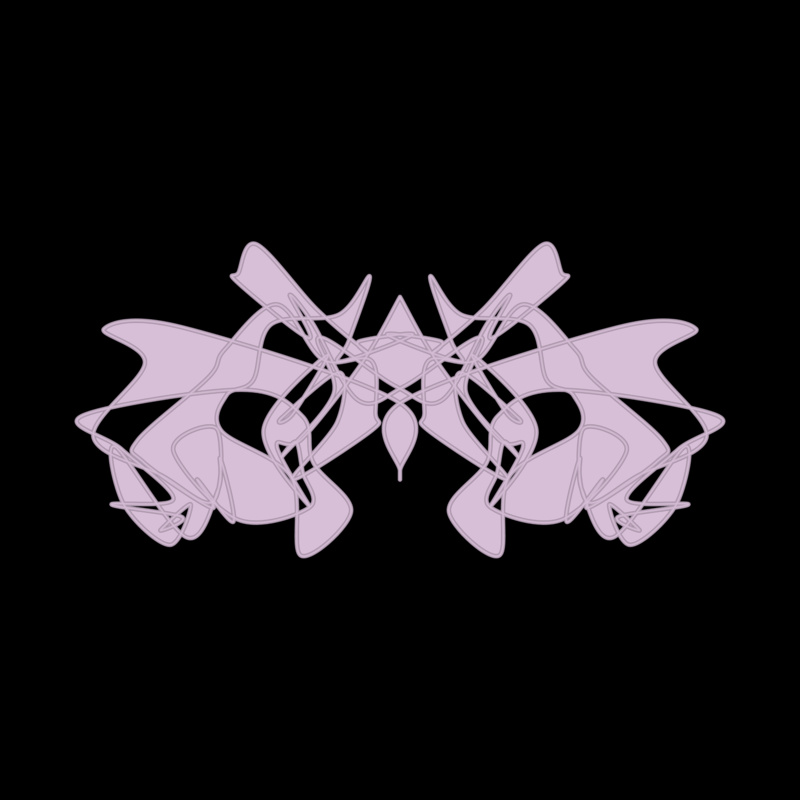 Cryptoblots are a deep generative series with a variety of emergent
properties that make it impossible to simply grade them from worst to best,
even on the basis of composite criteria.
Instead, we can talk about numerical divergences and aesthetics.
Cryptoblots are a deep generative series with a variety of emergent
properties that make it impossible to simply grade them from worst to best,
even on the basis of composite criteria.
Instead, we can talk about numerical divergences and aesthetics.
Numerical divergences may create increased demand for cryptoblots of rare colours, or ones that are uncommonly large or small, or are particularly perforated, or altogether devoid of enclosed spaces. This is because the majority of cryptoblots have less rare colours, are neither very big nor very small, have some holes but not too many, which don't add up to a significant amount of internal space.
Aesthetic considerations, however, may well make good many quantifiably average cryptoblots sought after either purely on the basis of attractive colour and/or shape combinations, or through the cryptoblot readily lending itself to interesting pareidolic interpretations.
Long story short, there is no single best cryptoblot; but sound justification could be made for several to be considered particularly noteworthy.
 Multiplicity refers to the number of individual single-colour
blots a given cryptoblot is comprised of.
Multiplicity refers to the number of individual single-colour
blots a given cryptoblot is comprised of.
Most cryptoblots are unary (1 blot), while some are binary (2 blots), and fewer still are ternary (3 blots).
Colour Rarity is a quantitative calculation that attempts to numerically capture how frequent or infrequent the colours of a given cryptoblot are.
Coverage is about how much space a given cryptoblot covers up overall on the canvas.
Extent is about how large a rectangle would be needed to fully cover up the given cryptoblot.
Holeyness is an estimate of the number of fully enclosed holes inside a given cryptoblot. Do not treat as a precise count, as very small and/or narrow holes are sometimes unavoidably double-counted by the algorithm.
Hollowness is about how much fully enclosed visible empty space a given cryptoblot contains.
Achievements are recognitions of something unusual about a particular cryptoblot. The list of these achievements may grow in the near future.
The Hidden Multiplicity achievement is when a binary or ternary cryptoblot has two of the same colours, making their apparent multiplicity different from their actual.
Serial Primacy achievements are about being the first cryptoblot in the series of a particular colour or colour group.
Unique Achievements are a miscellaneous category reserved for things the artist considers notable. At launch, there are only 4 unique achievements: "First Cryptoblot", "Middle Cryptoblot", "Last Cryptoblot", and "Auctioned on Sotheby's".
 There are 49 cryptoblot colours
of varying rarity, belonging to one of 7 basic colour groups.
The By Colour menu lets you view all cryptoblots that have the chosen
colour in their colour palette, while By Sole Colour shows cryptoblots
that have *only* that colour in their palette.
There are 49 cryptoblot colours
of varying rarity, belonging to one of 7 basic colour groups.
The By Colour menu lets you view all cryptoblots that have the chosen
colour in their colour palette, while By Sole Colour shows cryptoblots
that have *only* that colour in their palette.
In other words, By Colour > Royal Purple will show all 11 cryptoblots that have royal purple in them. Whereas By Sole Colour > Royal Purple will show only the 6 cryptoblots that have no other colour than royal purple in them.
 Price and ownership information is displayed based on local data
that is updated a few times per day from OpenSea, but not every time
a given cryptoblot's page is accessed.
Price and ownership information is displayed based on local data
that is updated a few times per day from OpenSea, but not every time
a given cryptoblot's page is accessed.
Price and ownership information shown on a cryptoblot's OpenSea page is most likely to be accurate in the case of discrepencies. But it's just a matter of time before this website catches up and starts displaying the right information too!
 No. It is a continuing work in progress.
No. It is a continuing work in progress.
Additional statistical data will be added and the user interface and experience will be further refined in the coming weeks.